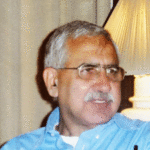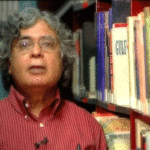The Big Question: Should the prime minister’s and governors’ houses be converted into universities, museums and resorts?
By Newsline Admin | Opinion | Published 7 years ago
Moneeza Hashmi
Moneeza Hashmi is Creative Media Director at Kashf Foundation and a trustee of the Faiz Foundation.
 Prime Minister Imran Khan’s announcement to allow the people of Pakistan access to some (and later, possibly all) heritage buildings throughout Pakistan has caused quite a stir – and, in some instances, furore – across the country.
Prime Minister Imran Khan’s announcement to allow the people of Pakistan access to some (and later, possibly all) heritage buildings throughout Pakistan has caused quite a stir – and, in some instances, furore – across the country.
The opinions being expressed range from the positive to the negative, and from the serious to the frivolous, to the downright ludicrous.
When I was approached by the Federal Ministry for Heritage in Islamabad to be on the Committee set up for this exercise, I agreed immediately. (Simply because I believe that this cause is a step in the right direction).
Having visited several world heritage sights and buildings across the globe and having had the opportunity to feast my eyes on some of the most glorious creations of human civilisation, I thought, why not allow Pakistanis this luxury as well? If families want to enjoy the lush green lawns of the Governor’s House in Lahore with their kids, they have the right to do so.
However, there are certain crucial aspects that should have been considered by the government before it opened the doors of these heritage sites to the general public.
For all practical purposes, our awam needs to be properly informed, trained and made aware of the importance of maintaining a certain decorum in such an environment. It is their duty to ensure that these magnificent, historic treasures are preserved and looked after. While visiting these monuments and relics they must not forget their civic and social responsibility to desist from damaging anything on the premises.
The Heritage Ministry needs to put in place a well thought out strategy before allowing visitors access to these sites. The security and preservation of the relics has to be guaranteed, first and foremost, at all costs. There needs to be a proper mechanism to monitor public behaviour inside the premises. Tour guides and caretakers must be present on-site.
Information, including historical background, must be provided on all that is on display. This includes the rooms, art, artifacts, furniture, sculptures and so on. That way, visitors go home well informed.
Hasty decisions, simply to make news headlines or for the sake of optics and imagery, need to be avoided, for they will only damage the considerable thought that went into planning such a move in the first place.
The public needs to be trained on how to behave within the precincts of these buildings and, more importantly, their children must be made to realise the value and worth of these edifices, access to which has been denied to them for so long.
Now that these spaces are being made accessible, it is up to the public to ensure they remain in pristine condition. Some of these national treasures have been preserved painstakingly for centuries, while others, less so.
I am all for opening our national heritage buildings to the general public, on the condition that certain regulatory systems are in place to preserve these monuments.
Fahim Zaman
Fahim Zaman has thrice worked as an administrator of Karachi city, simultaneously heading KMC, KWSB and KBCA.
 What is erroneously dubbed as the Prime Minister’s House these days, is essentially the Prime Minister’s Secretariat, which is the principal workplace of the prime minister of Pakistan. Located on Constitution Avenue, G-5/2, Islamabad, it was only recently renamed as the PM’s Office by none other than Nawaz Sharif. But it is also true that a small portion of this building has been used as an official residence by every Prime Minister since 1973.
What is erroneously dubbed as the Prime Minister’s House these days, is essentially the Prime Minister’s Secretariat, which is the principal workplace of the prime minister of Pakistan. Located on Constitution Avenue, G-5/2, Islamabad, it was only recently renamed as the PM’s Office by none other than Nawaz Sharif. But it is also true that a small portion of this building has been used as an official residence by every Prime Minister since 1973.
Islamabad’s master plan was prepared in the 1960s by a Greek firm called Doxiadis, which incidentally is currently involved in the planning and design of DHA City, Karachi. As in the case of any other modern city, Doxiadis had divided the federal capital territory into different zones in keeping with their specific use.
According to Islamabad’s master plan, the Prime Minister’s Secretariat is located in the ‘Admin Centre,’ which is designed for housing federal government buildings such as the PM’s office, the Supreme Court, the Parliament House, the Pakistan Secretariat (for different federal ministries), the Cabinet Secretariat and so on. The original master plan, judiciously protected by the Capital Development Authority (CDA), has no room to house a public or private university inside the Admin Centre. Needless to say, the Prime Minister’s Secretariat, as it stands now, has been built slowly over the years, along with the rest of Islamabad.
Prime Minister Imran Khan has stated that he does not intend to stay at the PM’s House and that a better use for it would be as an educational institution. Due to its ostentatious appearance, even former PM Nawaz Sharif had announced that he would not be using the PM’s House. However, he had to backtrack on his decision due to the practical challenges at hand.
The prime minister is the executive head of the government. The executive branch is divided and sub-divided into departments and supervised by ministers of the PM’s cabinet. Yet the chief executive is ultimately responsible for every action and move made by the government. This requires an army of secretaries, DGs and so on, who are reporting and coordinating for the PM.
The meetings of the cabinet, the National Security Council, the Economic Coordination Committee etc, all require strict security and secrecy. The PM’s office is rigged with secure communications and data lines that are connected to Pakistan’s foreign missions, the defence ministry, the GHQ, federal secretaries, governors, CMs IGs, chief secretaries and so on. Small quarters within the secretariat provide room for the PM and his family, thus eliminating the need for the PM to needlessly commute on the streets of Islamabad, or Rawalpindi, or fly in an AW-139.
However, if Prime Minister Khan were determined to stick to his pledge, then the CDA will have to amend Islamabad’s master plan. While the federal government may have the authority to make changes in the capital’s master plan, the summary justifying its amendment will have to be moved by the CDA. To avoid future prosecution, the CDA chairman will need to come up with a good reason to violate the master plan and the budgets invested during last 50 years. Unfortunately, the mere expression of a desire by the PM may not fly as a sufficient cause.
If the PM’s house is converted into an educational institution, the authorities will also have to deal with the security nightmare caused by the presence of a large number of students who could pose a challenge to the security plans of the red zone.
The knee-jerk decision to discard the PM’s Office appears to be rooted in a hybrid of middle-class morality and a feudal mindset, which drives our political elite to resort to populist slogans, without undertaking a proper inquiry or study of the tasks at hand. Next the Chief of Army Staff may decide that the GHQ should be converted into the National Defence University and that he will move to a smaller office near Faizabad.
By the way, a thousand acres of land and Rs 170 billion have been earmarked for the relocation of the GHQ – not far from the present Prime Minister’s Office.
Ayesha Tammy Haq
Ayesha Tammy Haq is a lawyer and a broadcast journalist
 The decision to open the gates of state property for public viewing serves several purposes and is not something that is unique to Pakistan.
The decision to open the gates of state property for public viewing serves several purposes and is not something that is unique to Pakistan.
Palaces and other historic buildings in other countries have been turned into hotels, conference venues and even educational institutions. Maintaining these buildings is very expensive and commercialisation of such properties has ensured their survival. This has worked well in several countries, including Egypt, India and Turkey.
To maintain their stately homes, landed families in the UK have opened them up to the public. This has also happened in the case of castles in Germany and other European countries. The important thing to note here is that these properties need a business model whereby money for the maintenance and upkeep of heritage properties is generated from entrance and other fees.
In the case of Pakistan, demystifying grand colonial properties like the palatial governor’s houses is an important policy shift. Opening them to the public is a good idea; however, state assets and heritage properties must be protected. There should be a reasonable entrance fee, which could go towards the maintenance of the property, and visitors must be made aware of the need to respect and preserve these properties so that they may continue to be enjoyed by future generations.
In the case of heritage properties whose uses are changed completely – for instance, if they are converted into hotels or conference centres and so on – the new owners must ensure that there are inbuilt protections so that the property is properly maintained and that all laws which apply to heritage sites are strictly enforced.
I met someone recently, who told me that as a child he used to cycle past the Governor’s House in Lahore on his way to school every day, and was always fascinated by the palatial edifice and the grounds that lay behind the high walls. And his first visit to the house, after its doors were flung open to the public recently, was not a disappointment.
Ghazi Salahuddin
Ghazi Salahuddin is a senior journalist at The News.
 Revolutionaries may be excused for some of their fanciful and highly romanticised ideas. But the ‘tabdeeli’ brigades of ‘naya’ Pakistan seem intent on putting almost all their bets on peripheral schemes that are meant to win popular applause. One of these optics is the plan to change the use of prominent government-owned buildings such as the Prime Minister’s House in Islamabad and the governor’s houses in the provinces. This is to be done ‘in the public’s interest.’
Revolutionaries may be excused for some of their fanciful and highly romanticised ideas. But the ‘tabdeeli’ brigades of ‘naya’ Pakistan seem intent on putting almost all their bets on peripheral schemes that are meant to win popular applause. One of these optics is the plan to change the use of prominent government-owned buildings such as the Prime Minister’s House in Islamabad and the governor’s houses in the provinces. This is to be done ‘in the public’s interest.’
We have been informed that the PTI-led government will turn the Prime Minister’s House into a post-graduate university of “high quality.” The Governor’s House in Murree is destined to become a “heritage boutique hotel.” The list goes on.
Yes, austerity is the name of the game. There is no doubt that our rulers have lived in obscene opulence at public expense. But it is not just the PM’s House or any other grand mansion. The malaise is rooted in Islamabad itself –Islamabad as an idea and Islamabad as a reality. Insecure and poor nations have a psychic need for such impact edifices to project their national pride.
There are two obvious reasons why this plan looks like it may be jinxed. One is the frivolity of how the PTI made promises that it could not keep. The list is long, from the sublime to the ridiculous. The spectacle of how the vehicles of the PM’s House were auctioned is comedic. Prime Minister Imran Khan had said he won’t use a special plane for foreign visits. He did. The Atif Mian debacle is for historians to interpret: why is a strong government surrendering to bigots?
The other reason is that we are confronted with a grim situation to say the least, and not just in the economic context. The temperature is already on the rise, well before the three-month honeymoon period is over. Keeping the ‘purana’ Pakistan in order is likely to overwhelm the struggle to make a ‘naya’ Pakistan.


